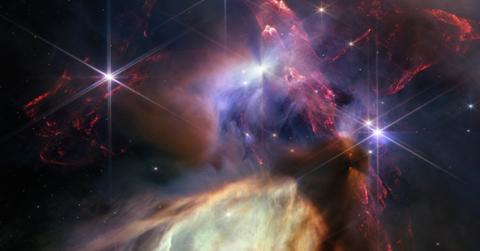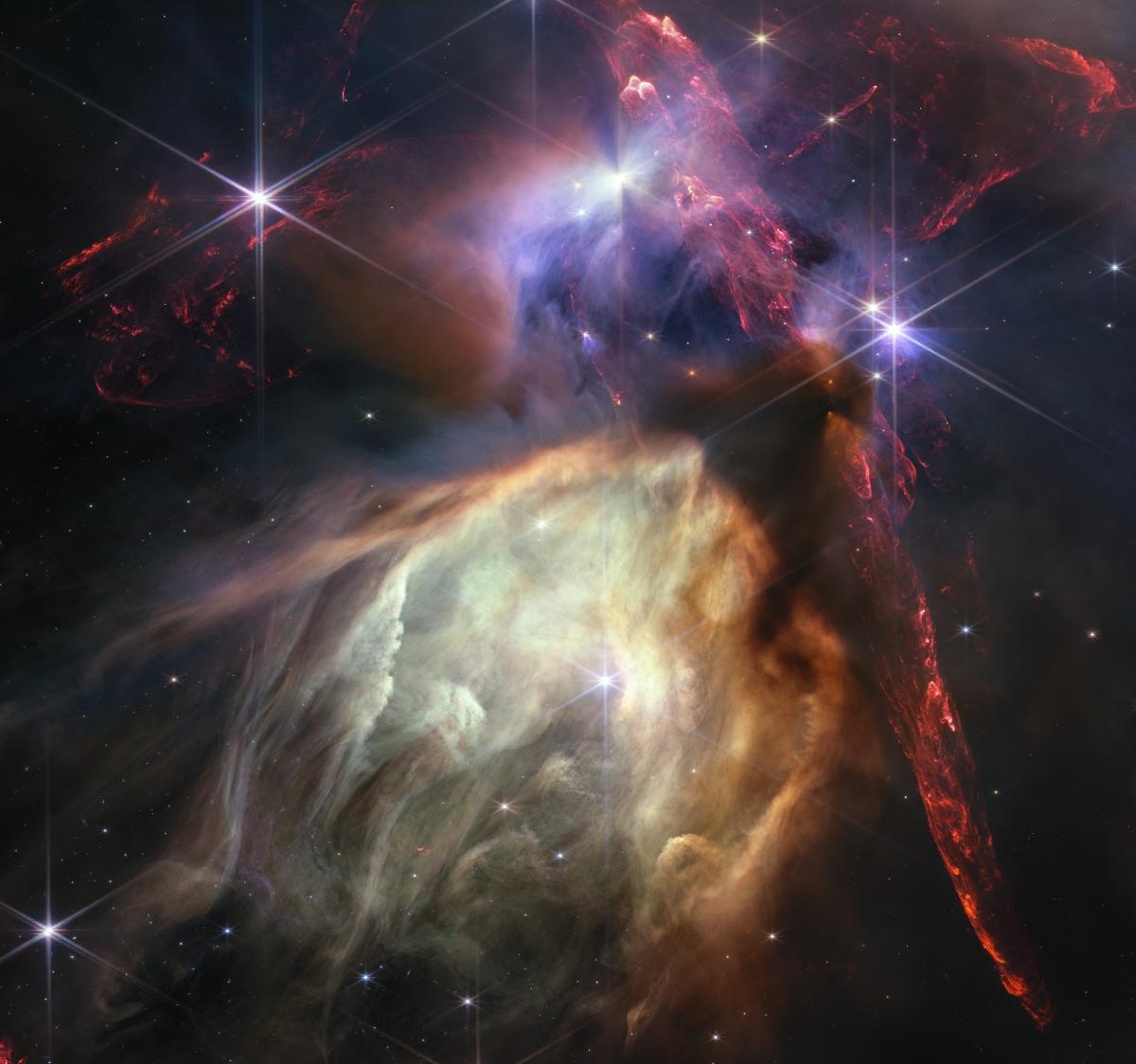New Image From James Webb Space Telescope Shows the Birth of a Star
Published July 12 2023, 12:59 p.m. ET
Over the years, organizations like the National Aeronautics and Space Administration (NASA) have developed better and better technology to see the cosmos clearer than before. Now, scientists can examine things like black holes or the surface of planets in high definition, and that in itself is a triumph worth celebrating.
In celebration of the first anniversary of the James Webb Space Telescope’s mission to record pictures of the cosmos on July 12, 2023, NASA released an image it took of the birth of a star. Here's what you need to know about how stars are born and what the image depicts.
What appears in the James Webb Telescope birth of a star image?
The image NASA unveiled on July 12 shows a region located 390 light-years away that has about 50 young stars that are all similar in mass to the sun or smaller. The region in the image is the Rho Ophiuchi cloud complex. It is the closest star-forming region to Earth, according to NASA.
NASA says darker areas in the image represent protostars that are still forming. Red areas in the upper part of the image are “bipolar jets of molecular hydrogen” that occur “when a star first bursts through its natal envelope of cosmic dust, shooting out a pair of opposing jets into space like a newborn first stretching her arms out into the world,” NASA said in a statement.
“Webb’s image of Rho Ophiuchi allows us to witness a very brief period in the stellar lifecycle with new clarity,” said Klaus Pontoppidan, Webb project scientist at the Space Telescope Science Institute in Baltimore. “Our own sun experienced a phase like this long ago, and now we have the technology to see the beginning of another’s star’s story.”

Which event marks the birth of a star?
According to Siyavula.com, a nuclear fusion reaction is the event that marks the birth of a star. The creation of a star has three phases. The first phase is a nebula, a slow-rotating cloud of cold gas and dust.
After a while, the gas cloud heats up and gets denser, forming a protostar. A protostar can exist for about 50 million years before it gets hot enough to trigger the nuclear fusion reaction needed to become a star, Siyavula.com says.
According to Astronomy.com, after the protostar gets hot enough to trigger nuclear reactions, the new star eventually stabilizes based on its mass. It can be difficult to see the birth of a star in action because the reactions take place behind dark clouds and is "invisible" until stellar radiation and winds dissipate — making it extra special when the birth is caught on camera!
The first images from the Webb Telespace were released in 2022.
In July 2022, the Webb Telescope revealed its first images taken of the cosmos since it was launched on Dec. 25, 2021. The images showed the SMACS 0723 galaxy cluster, the Southern Ring planetary nebula (NGC 3132), the cosmic cliffs of the Carina Nebula, and Stephan’s Quintet, a collection of five galaxies.
“In just one year, the James Webb Space Telescope has transformed humanity’s view of the cosmos, peering into dust clouds and seeing light from faraway corners of the universe for the very first time,” said NASA Administrator Bill Nelson. “Every new image is a new discovery, empowering scientists around the globe to ask and answer questions they once could never dream of.”

“Webb has given us a more intricate understanding of galaxies, stars, and the atmospheres of planets outside of our solar system than ever before, laying the groundwork for NASA to lead the world in a new era of scientific discovery and the search for habitable worlds,” said Nicola Fox, associate administrator of NASA’s Science Mission Directorate in Washington.
Let's hope in the future, NASA continues to show more pictures of the fascinating galaxy beyond!

